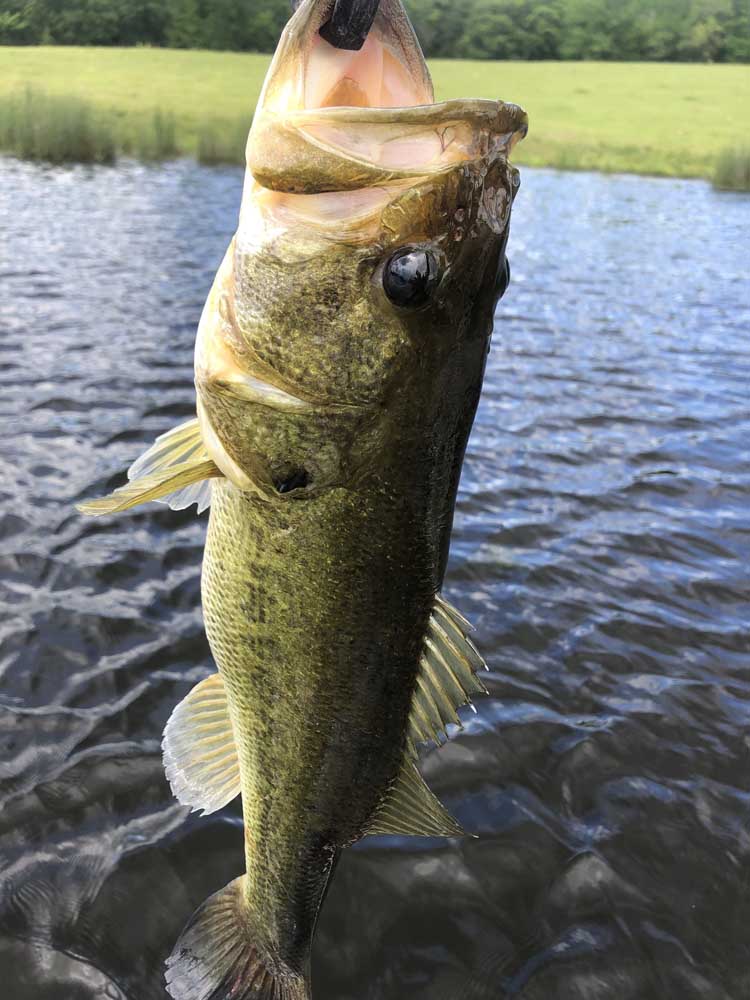Short Turnaround: Post-Spawn Bass May Not Move As Much As Fishermen Believe
Published 10:58 pm Thursday, April 13, 2023

- After early spring weather that has caused bass to spawn sporadically, more are moving into a post-spawn cycle and should become active feeders soon.
If you think the early spring weather has been crazy, just think about how a bass must feel.
Even before the calendar flipped seasons, February weather was warm enough it had bass starting to think about spawning and fishermen thinking about catching them. March rolled around and the temperature was up and down like a Duncan yo-yo. Now it is mid-April and still the weather has not completely settled, but finally water temperatures are trending upwards and the fish that have not spawned will quickly do so.
Trending
“Bass will spawn anywhere from 58- to 70-degrees (water temperature), with that sweet spot being 63 to 68. That is when you will find fish will pull up on beds, but when it is 70 to 75 there will still be some remaining on beds,” explained Jake Norman, Texas Parks and Wildlife Department Inland Fisheries district biologist from Tyler.
With the weather swings this year, Norman said it appears the biggest push to spawning beds came in early March.
“That was the biggest wave I have seen. It was the only significant wave. It has been a trickle spawn ever since,” the biologist explained.
The slower spawn can be important to fishermen because as the days go along, the time bass spend on a bed becomes less and less. It is believed that the fish that come in to spawn earlier in the season stay longer perhaps to allow the water temperature to rise and stabilize enough for them to successfully spawn. As the water temperatures rise, a female may only be on a bed for a day or day and a half before dropping her eggs and disappearing.
Almost nothing can be claimed as an exact with fish, but typically it is the biggest females that move up first to spawn.
“Some of the quality fish spawn early on. This is not full-proof, but some of the bigger fish pull up and spawn sooner because they are trying to get the cream-of-the-crop habitat,” Norman said.
Trending
Fishermen, in part, time the spawn by finding females with bloody tails and just generally beat up as a sign that spawning activity is underway. It is a good marker, but not for the reason most fishermen think.
“When people catch a big female, they will see a bloody tail and think it is from fanning the nest, but that is not the case. They get bloody from the male nipping their tail or bumping in to it because females don’t do any of the nest-prepping at all,” Norman said.
The question for fishermen now becomes where do the bass go after they spawn? Popular thought is that they move off, maybe into much deeper water, to rest and recuperate. The reality is most do not go far at all.
Norman has been involved in a recently completed tracking study conducted on Lake Fork and Toledo Bend Reservoir, and one of the key results from both lakes is that bass seldom move far whether it is pre-spawn, post-spawn, summer, fall or winter.
“Most of the fish tracked at Fork didn’t go far. We didn’t see a mass exodus where they went miles and miles to a spawning grounds and then back out to a main lake point,” Norman said. While both lakes had an outlier bass or two that was a runner, the results at Toledo Bend were much the same.
What does happen is that the fish will move slightly and become lethargic for maybe a few days or week after leaving the nest. Norman said after that break, they again become active feeders.
“A week after abandoning the nest, they are really aggressive feeders. Post-spawn I think they are in a funk, but it is really short-lived and then they are aggressive,” he said.
At that point it becomes a time when big lures can be successful because the fish are aggressively feeding on bigger baits like gizzard shad.
Norman added it is a time that fishermen are still going to find females beaten up from spawning activity, but it is nothing to be concerned with if keeping fish to eat or releasing them.






